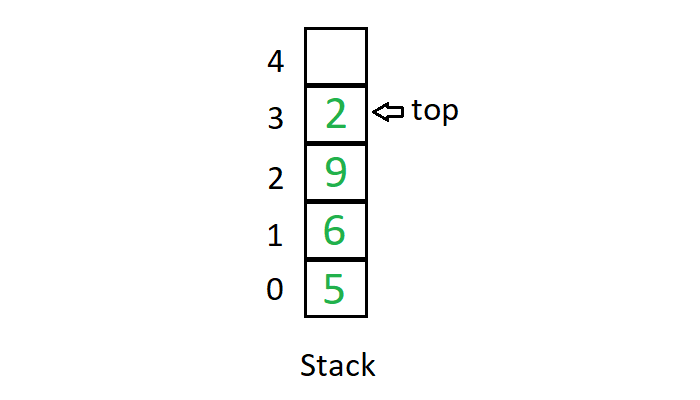Difference between Stack and Queue Data Structures
Last Updated :
29 Mar, 2023
Stack: A stack is a linear data structure in which elements can be inserted and deleted only from one side of the list, called the top. A stack follows the LIFO (Last In First Out) principle, i.e., the element inserted at the last is the first element to come out. The insertion of an element into the stack is called push operation, and the deletion of an element from the stack is called pop operation. In stack, we always keep track of the last element present in the list with a pointer called top.
The diagrammatic representation of the stack is given below:

Queue is a linear data structure in which elements can be inserted only from one side of the list called rear, and the elements can be deleted only from the other side called the front. The queue data structure follows the FIFO (First In First Out) principle, i.e. the element inserted at first in the list, is the first element to be removed from the list. The insertion of an element in a queue is called an enqueue operation and the deletion of an element is called a dequeue operation. In queue, we always maintain two pointers, one pointing to the element which was inserted at the first and still present in the list with the front pointer and the second pointer pointing to the element inserted at the last with the rear pointer.
The diagrammatic representation of the queue is given below:

Difference between Stack and Queue Data Structures are as follows:
| Stacks |
Queues |
| A stack is a data structure that stores a collection of elements, with operations to push (add) and pop (remove) elements from the top of the stack. |
A queue is a data structure that stores a collection of elements, with operations to enqueue (add) elements at the back of the queue, and dequeue (remove) elements from the front of the queue. |
| Stacks are based on the LIFO principle, i.e., the element inserted at the last, is the first element to come out of the list. |
Queues are based on the FIFO principle, i.e., the element inserted at the first, is the first element to come out of the list. |
| Stacks are often used for tasks that require backtracking, such as parsing expressions or implementing undo functionality. |
Queues are often used for tasks that involve processing elements in a specific order, such as handling requests or scheduling tasks. |
| Insertion and deletion in stacks takes place only from one end of the list called the top. |
Insertion and deletion in queues takes place from the opposite ends of the list. The insertion takes place at the rear of the list and the deletion takes place from the front of the list. |
| Insert operation is called push operation. |
Insert operation is called enqueue operation. |
| Stacks are implemented using an array or linked list data structure. |
Queues are implemented using an array or linked list data structure. |
| Delete operation is called pop operation. |
Delete operation is called dequeue operation. |
| In stacks we maintain only one pointer to access the list, called the top, which always points to the last element present in the list. |
In queues we maintain two pointers to access the list. The front pointer always points to the first element inserted in the list and is still present, and the rear pointer always points to the last inserted element. |
| Stack is used in solving problems works on recursion. |
Queue is used in solving problems having sequential processing. |
| Stacks are often used for recursive algorithms or for maintaining a history of function calls. |
Queues are often used in multithreaded applications, where tasks are added to a queue and executed by a pool of worker threads. |
| Stack does not have any types. |
Queue is of three types – 1. Circular Queue 2. Priority queue 3. double-ended queue. |
| Can be considered as a vertical collection visual. |
Can be considered as a horizontal collection visual. |
| Examples of stack-based languages include PostScript and Forth. |
Examples of queue-based algorithms include Breadth-First Search (BFS) and printing a binary tree level-by-level. |
Applications of stack:
- Some CPUs have their entire assembly language based on the concept of performing operations on registers that are stored in a stack.
- Stack structure is used in the C++ run-time system.
Applications of queue:
- Queue data structure is implemented in the hardware microinstructions inside a CPU.
- Queue structure is used in most operating systems.
Share your thoughts in the comments
Please Login to comment...